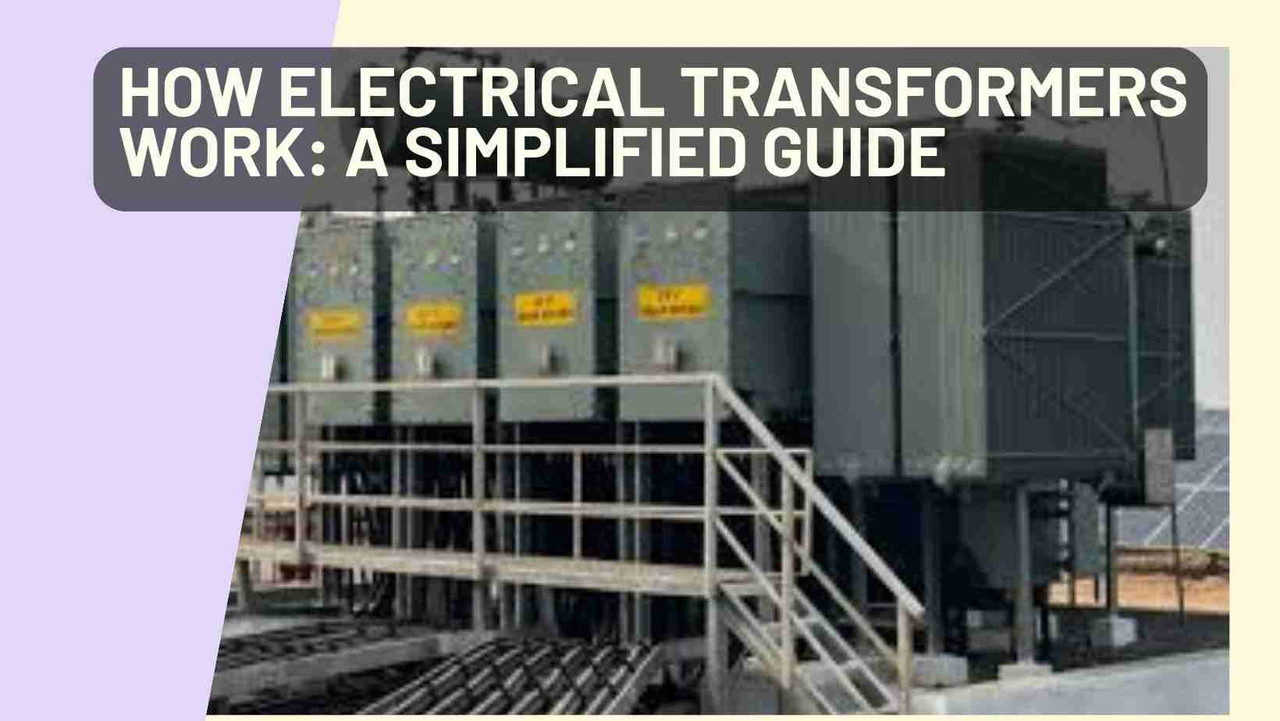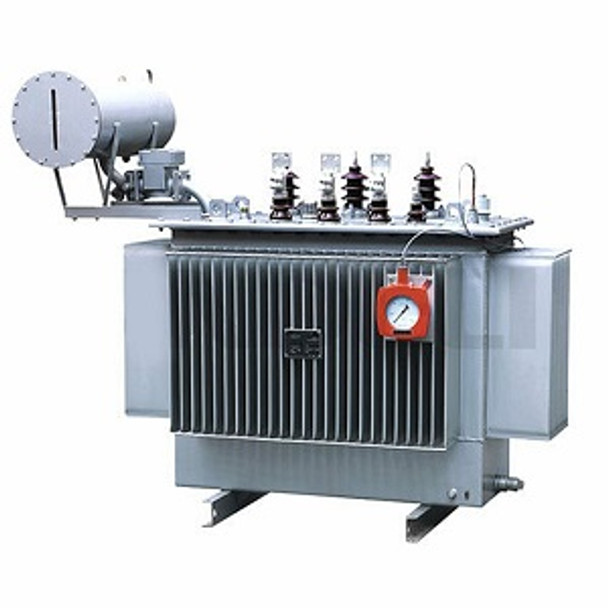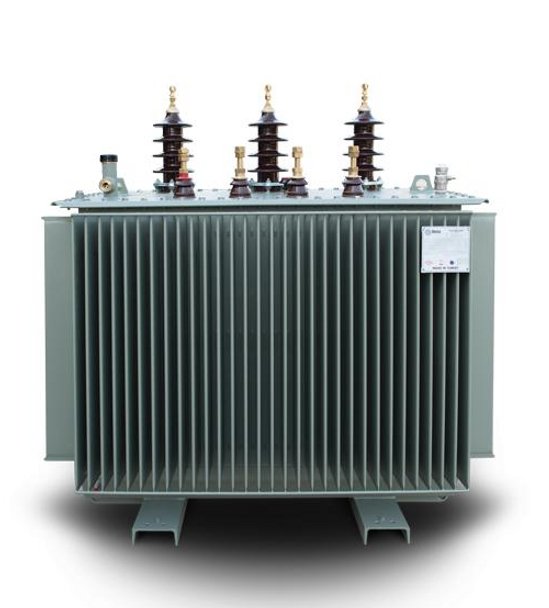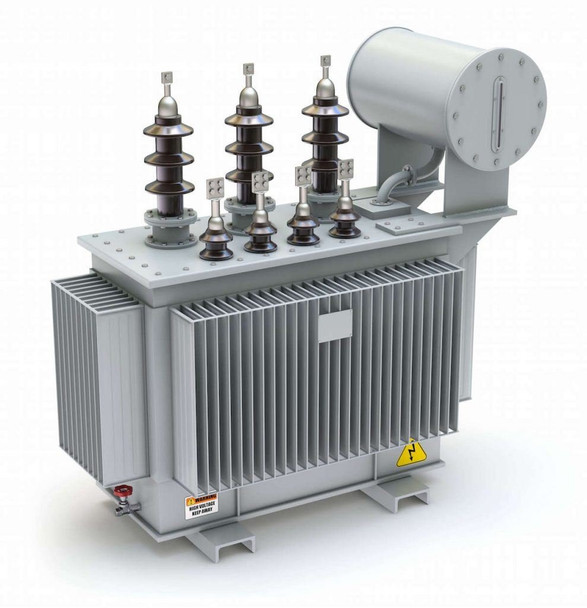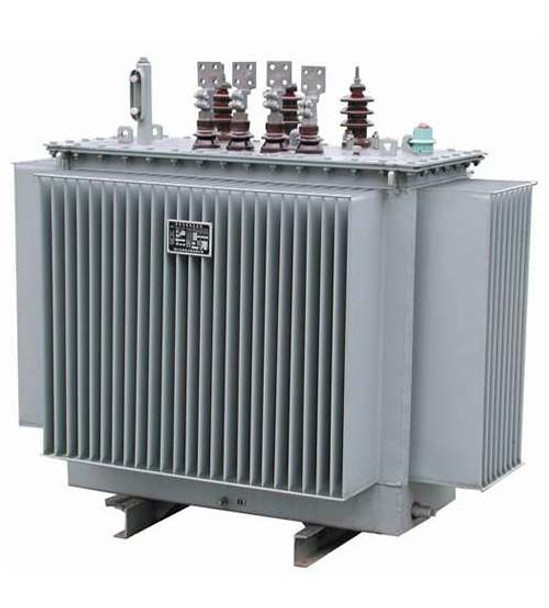How Electrical Transformers Work: A Simplified Guide
The electrical transformer, a cornerstone of modern electrical engineering, quietly facilitates the flow of power that drives our homes, industries, and technologies, Electrical transformers, while often overlooked, are key players in this process. They form the backbone of power distribution, ensuring that electricity flows smoothly from power stations to our households, industries, and gadgets. But what does that really mean, and how do they perform this seemingly? To truly grasp the inner workings of transformers, let's embark on a journey that demystifies these fascinating devices and makes their complex processes accessible.
Transformers work due to three fundamental components: a core, typically constructed from ferromagnetic materials like iron, and two distinct sets of wire coils known as the primary and secondary windings. When an alternating current (AC) flows through the primary winding, a connection begins. The primary coil generates a pulsating magnetic field that takes center stage. The core, a silent but vital performer, guides this magnetic spectacle, orchestrating its path between the primary and secondary coils, all the while ensuring that not a bit of energy is wasted in the process. As this magnetic phenomenon reaches the secondary coil, a captivating transformation occurs. It compels the electrons within the secondary winding to dance to its tune, generating an electric current through a phenomenon known as electromotive force (EMF).
However, this isn't the whole story. In the earlier days of transformer design, it became evident that employing a solid core had its drawbacks. A significant portion of energy was dissipated as heat due to a phenomenon called eddy currents. To address this challenge, transformer cores are now crafted from laminated sheets of iron. This ingenious modification ensures that heat is dispersed more evenly and energy loss is kept to a minimum.
The primary role of a transformer lies in its ability to either step up or step down the voltage from the primary to the secondary windings. This remarkable feat is achieved by a seemingly simple adjustment: altering the ratio of coils on one side relative to the other. For example, if a transformer boasts five coils on the primary side and ten on the secondary, it becomes a 1:2 step-up transformer, effectively doubling the voltage from the primary to the secondary. Conversely, if the primary features ten coils while the secondary has five, it becomes a 2:1 step-down transformer, neatly halving the voltage.
Transformers come in various types, serving a multitude of purposes such as power distribution, isolation, signal processing, current sensing, and more. Transformers play a pivotal role especially in industrial application and other sectors, and at Tikweld Welding we've got you covered. Explore our extensive inventory, including the individual components that make up a transformer, allowing you to custom-build one precisely tailored to your specific needs.
This simplified guide will take you on a journey to understand the inner workings of electrical transformers. By the end, you'll have a clear grasp of how these seemingly magical devices shape our modern world by facilitating the efficient use of electrical power.
Buy Online... Power Transformer ABB 500KVA 33.0/415KV
Understanding Electricity Basics
Before delving into the intricacies of electrical transformers, it's essential to establish a foundation in the fundamental principles of electricity. Understanding voltage, current, and resistance is crucial as these concepts form the basis for comprehending why voltage transformation is a necessity in electrical systems.
A. Voltage, Current, and Resistance
- Voltage (V): Voltage, often measured in volts (V), is a fundamental electrical parameter that represents the electrical potential or force that drives electric current through a circuit. Think of it as the pressure that propels electrons along a conductor, similar to water pressure in a plumbing system. Voltage is the energy per unit charge, and it determines the intensity of electrical flow.
- Voltage sources, like batteries and power generators, provide the energy required to push electrons through a circuit.
- Voltage is analogous to the height of a waterfall in a hydroelectric power plant; the greater the height, the more potential energy is available.
- Current (I): Current, measured in amperes (A), is the rate of flow of electric charge through a conductor. It represents the movement of electrons and is akin to the flow of water in a river.
- In a closed circuit, current is a continuous flow of charged particles (usually electrons) from a higher voltage point to a lower voltage point.
- Current is the quantity of charge passing through a conductor in a given amount of time.
- Resistance (R): Resistance, measured in ohms (Ω), is the property of a material that opposes the flow of electric current. It acts as an obstruction to the flow of electrons and can be thought of as the constriction of a water pipe, limiting the flow of water.
- Conductors, such as copper or aluminum wires, have low resistance and allow current to flow easily.
- Insulators, like rubber or plastic, have high resistance and prevent the flow of current.
Principles of Electromagnetic Induction
Electromagnetic induction is the process by which a changing magnetic field induces an electric current in a conductor. This phenomenon was discovered by Michael Faraday in 1831 and is the basis of many electrical devices, such as transformers, generators, and motors.
To understand how electromagnetic induction works, let us consider a simple example of a coil of wire connected to a galvanometer, which is a device that measures electric current. If we place a permanent magnet near the coil, nothing happens. The coil does not experience any change in the magnetic field, and the galvanometer does not show any current. However, if we move the magnet towards or away from the coil, the galvanometer will show a deflection, indicating that a current is flowing in the coil. This is because the movement of the magnet changes the magnetic field around the coil, and this change induces an electromotive force (EMF) in the coil. The EMF is the voltage that drives the current in the coil.
- The amount of EMF induced in the coil depends on several factors, such as:
- The number of turns in the coil: More turns means more wire exposed to the changing magnetic field, and thus more EMF induced.
- The speed of the magnet's movement: Faster movement means faster change in the magnetic field, and thus more EMF induced.
- The strength of the magnet: Stronger magnet means stronger magnetic field, and thus more EMF induced.
How does this relate to Electrical Transformers?
In a transformer, the core (often made of iron) creates a strong, constant magnetic field within it. When an alternating current (AC) flows through one set of windings, it generates a constantly changing magnetic field.This changing magnetic field induces an alternating voltage in another set of windings, which is the core principle of transformer operation.
Transformers operate based on the concept of turns ratio. The varying number of turns in the primary and secondary coils determines whether the transformer steps up (increases) or steps down (decreases) the voltage. Step-up transformers have more turns on the secondary coil than the primary, increasing the voltage. Step-down transformers have fewer turns on the secondary coil than the primary, decreasing the voltage.
Buy Online... ABB Power Transformer 50KVA 33/0.415KV
Types and Applications of Transformers
There are many types and applications of transformers, depending on their design, construction, function, or purpose. Some of the common types and applications of transformers are:
Step-up and step-down transformers: These transformers are used to increase or decrease the voltage level of the input power to match the output load. Step-up transformers have more turns on the secondary coil than the primary coil, while step-down transformers have more turns on the primary coil than the secondary coil. Step-up and step-down transformers are widely used in power transmission and distribution systems, where they adjust the voltage level between different stages of the grid.
Isolation transformers: These transformers are used to isolate one circuit from another electrically, as the primary and secondary coils are not electrically connected. Isolation transformers can prevent electric shocks, noise interference, or ground loops. Isolation transformers are often used in medical equipment, sensitive electronics, or audio systems.
Voltage regulation transformers: These transformers are used to maintain a constant voltage level at the output load, regardless of the fluctuations in the input voltage or load current. Voltage regulation transformers can improve the power quality and efficiency of electrical devices. Voltage regulation transformers are often used in industrial equipment, lighting systems, or computer networks.
Signal processing transformers: These transformers are used to transmit or receive signals between different circuits or devices. Signal processing transformers can amplify, attenuate, filter, or modulate signals. Signal processing transformers are often used in communication systems, audio systems, or instrumentation.
Measurement transformers: These transformers are used to measure the voltage or current levels in a circuit without directly connecting to it. Measurement transformers can reduce high voltage or current levels to low and safe levels that can be read by meters or instruments. Measurement transformers are often used in power systems, protection systems, or testing systems.
Protection transformers: These transformers are used to protect electrical devices or circuits from overvoltage, overcurrent, short circuit, or fault conditions. Protection transformers can isolate, limit, or interrupt the fault current or voltage. Protection transformers are often used in power systems, protection systems, or safety systems].
Transformers can also be classified based on their cooling method (such as oil-immersed or air-cooled), their insulation type (such as dry-type or liquid-filled), their core material (such as iron-core or air-core), their winding arrangement (such as shell-type or core-type), their configuration (such as single-phase or three-phase), and their shape (such as toroidal or rectangular).
Transformer Efficiency and Losses
Transformer efficiency is a measure of how well a transformer converts electrical energy from one circuit to another. It is defined as the ratio of the output power to the input power, expressed as a percentage. Ideally, a transformer should have no energy losses and be 100% efficient. However, in reality, transformers have some energy losses that reduce their efficiency.
The main sources of energy losses in transformers are:
Copper losses: These are the losses due to the resistance of the copper windings in the primary and secondary coils. The resistance causes heat generation and power dissipation in the windings. Copper losses depend on the current flowing through the windings and the resistance of the wire. They can be reduced by using thicker or better quality wire, or by cooling the windings
Core losses: These are the losses due to the magnetic properties of the iron core. The core is subjected to a changing magnetic field that causes hysteresis and eddy currents in the core. Hysteresis is the lagging of the magnetic domains behind the applied field, which causes energy dissipation and heat generation. Eddy currents are circular currents induced in the core by the changing field, which also cause energy dissipation and heat generation. Core losses depend on the voltage applied to the primary coil and the frequency of the alternating current. They can be reduced by using better quality or laminated iron, or by using an air core.
Stray losses: These are the losses due to leakage of magnetic flux from the core or windings, or due to parasitic currents in other parts of the transformer. Stray losses depend on the design and construction of the transformer, such as the shape, size, and arrangement of the core and windings. They can be reduced by improving the insulation, shielding, or grounding of the transformer.
Buy Online... Epochem premium Transformer Oil 20L
Benefits of Using the Right Transformer
Choosing the right transformer for specific applications can have many advantages for the performance, quality, and safety of electrical systems and devices. Some of the key benefits of using the right transformer are:
Voltage regulation: Using the right transformer can help maintain a constant voltage level at the output load, regardless of the fluctuations in the input voltage or load current. This can improve the power quality and efficiency of electrical devices, as well as prevent damage or malfunction due to overvoltage or undervoltage. Voltage regulation transformers are often used in industrial equipment, lighting systems, or computer networks.
Electrical isolation: Using the right transformer can help isolate one circuit from another electrically, as there is no direct connection between the primary and secondary coils. This can prevent electric shocks, noise interference, or ground loops that may occur due to different potentials or frequencies between the circuits. Electrical isolation transformers are often used in medical equipment, sensitive electronics, or audio systems.
Load management: Using the right transformer can help distribute and balance the load current among different circuits or devices. This can improve the reliability and stability of the electrical system, as well as reduce power losses and overheating due to overload or short circuit. Load management transformers are often used in power systems, protection systems, or testing systems.
Efficiency: Using the right transformer can help reduce energy losses and increase efficiency in electrical systems and devices. This can save energy and cost, as well as reduce environmental impact. Efficiency depends on several factors, such as the design, construction, function, and purpose of the transformer, as well as the type, size, speed, power source, and disc type of the angle grinder.
Getting the right transformer can make a significant difference in electrical and electronic applications. It can help you convert, isolate, regulate, process, measure, or protect electrical energy efficiently and safely. It can also help you achieve better results and performance with your angle grinder. Choosing the right transformer is essential for any electrical engineer or hobbyist who wants to work with electricity creatively and effectively.
Buy Online... Power Transformer 100KVA 33/0.415KV
Challenges and Maintenance of Transformers
Transformers are vital devices that enable the efficient and safe transmission and distribution of electrical energy. However, transformers also face some challenges in their operation, such as:
Aging and deterioration: Transformers have a limited lifespan, which depends on their design, construction, function, and purpose. Over time, transformers can experience aging and deterioration due to various factors, such as thermal stress, electrical stress, mechanical stress, environmental stress, or human error. Aging and deterioration can affect the performance, reliability, and safety of transformers.
Faults and failures: Transformers can encounter faults and failures due to various causes, such as overvoltage, overcurrent, short circuit, lightning, fire, water, oil leakage, or vandalism. Faults and failures can result in damage, malfunction, or explosion of transformers.
Losses and inefficiency: Transformers have some energy losses that reduce their efficiency. The main sources of energy losses in transformers are copper losses, core losses, and stray losses. Losses and inefficiency can increase the operating cost and environmental impact of transformers.
To overcome these challenges and ensure the efficiency and longevity of transformers, regular maintenance is essential. Maintenance is the process of inspecting, testing, cleaning, repairing, or replacing the components of transformers to keep them in good working condition. Maintenance can be classified into two types: preventive maintenance and corrective maintenance.
Preventive maintenance: This is the maintenance that is performed on a routine basis to prevent or reduce the occurrence of faults or failures in transformers. Preventive maintenance includes activities such as checking the condition and compatibility of the disc, the power cord, the plug, the switch, and the brushes; lubricating the spindle, the bearings, and the gears; cleaning the tool's body, disc, spindle, guard, and handle; adjusting the guard position and angle; replacing any damaged or worn out parts; etc.
Corrective maintenance: This is the maintenance that is performed on an as-needed basis to restore or improve the functionality of transformers after a fault or failure has occurred. Corrective maintenance includes activities such as troubleshooting the cause and location of the fault or failure; repairing or replacing any faulty or damaged parts; testing the performance and safety of the transformer; etc.
Maintenance can help improve the performance, quality, and safety of transformers. It can also help extend their lifespan and reduce their energy losses and operating costs. Maintenance is an important task for any electrical engineer or hobbyist who wants to work with electricity creatively and effectively.
Buy Online... Power Transformer ABB 200KVA 33.0/0.415KV
Conclusion
Transformers are versatile and useful devices that can transfer electrical energy from one circuit to another by using the principle of electromagnetic induction. They can help you convert, isolate, regulate, process, measure, or protect electrical energy efficiently and safely. In this article, we have learned about the basics of electrical transformers, their types, features, functions, and applications. We have also learned about the principles of electromagnetic induction, which is the fundamental phenomenon behind transformer operation. Finally we have discussed the benefits of using the right transformer for specific applications, as well as the challenges and maintenance of transformers in general. For more information about electrical transformers Contact Us Today.

